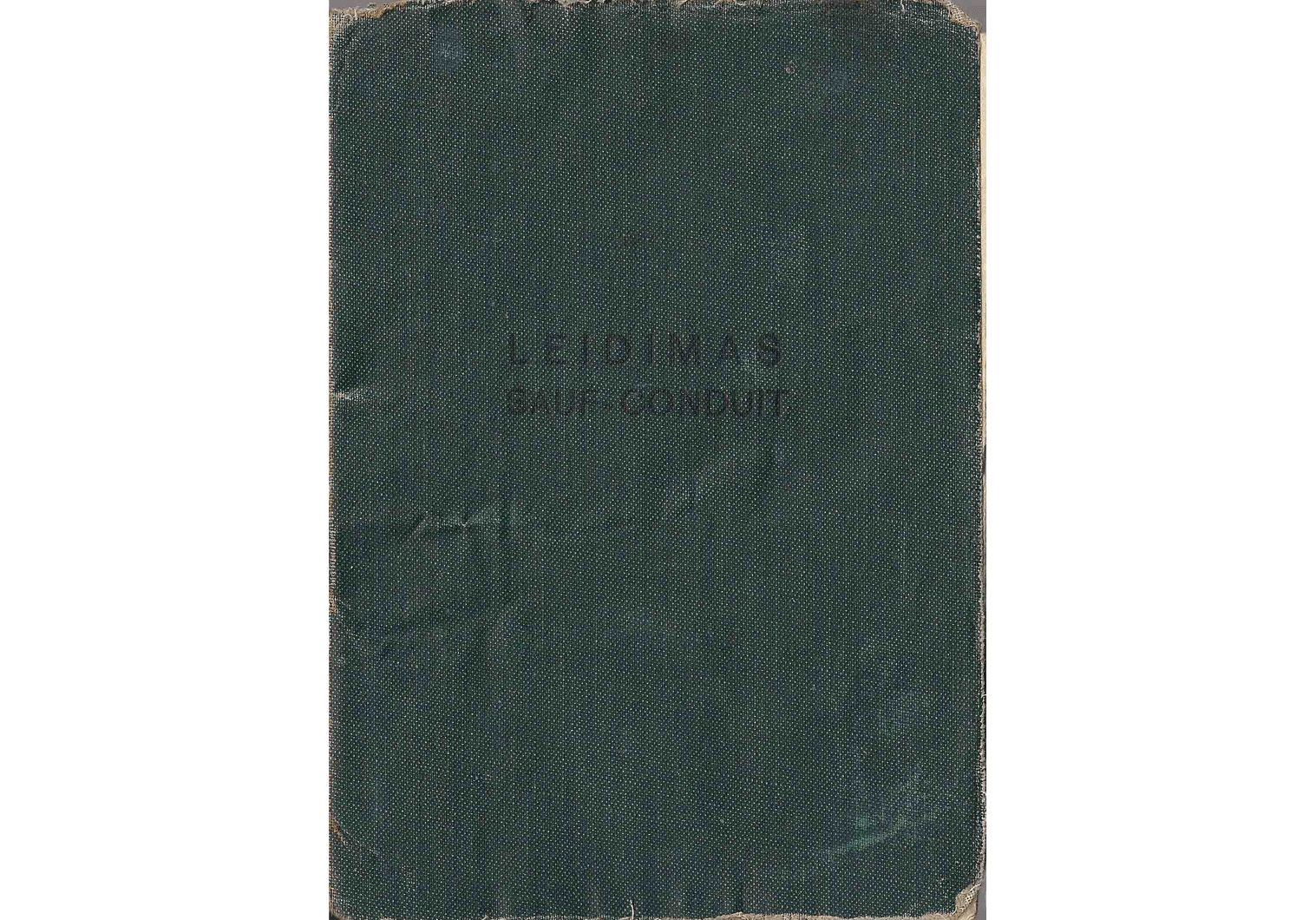1940 Lithuanian Refugee travel certificate
Escaping occupation to freedom…
1939 was one of the most important years of the 20th Century. In that year alone the world’s fate and destiny changed forever: starting with the complete occupation of Czechoslovakia, Memel territory, Ribbentrop-Molotov pact and the outbreak of World War Two.
The Ribbentrop-Molotov agreement from August 1939 was a game changer. The secret clause inside it allowed the two new allies, Germany & Soviet Union, to carve up Poland and divide the spoils of war between them, thus after Germany made the first move on September 1st, it was Russia’s turn, and the latter invaded from the east on September 17th.
The occupation was done in several stages, the first in 1939 and the second on June of 1940, when the Soviet Union invaded and completely occupied Lithuania, Latvia and Estonia. The first stage relates to the occupation of Poland and Russia’s first step towards the three small Baltic States, the period of the Soviet-Baltic mutual assistance pact (which was actually forced upon them) from 1939. The second and last stage was the full occupation of the three and establishing Soviet controlled governments after June 1940.
Occupation of the Baltic states
Soviet occupation of the Baltic states (1940)
By early 1940 Europe was in war: Poland has been conquered, and Germany with Russia where jointly controlling the country. Anyone who did not manage to escape east, into Romania, Hungary or the Baltic states was caught. No way out was seen. Hope was gone.
By this time, there were those who were lucky enough to have done just that: thousands found refuge in neighboring Bucharest and Budapest and also far up north, in Lithuania, Kaunas. This was the location of a very rich and traditional old Jewish community and now, a refuge for hundreds and even several thousand refugees, the lucky ones who managed to cross the border before it was shut tight.
As the days went by it was becoming clearer that the situation would not remain safe for long. With both German and Russian soldiers massing up on the borders of the tiny small country, all feared the worst. All began to anticipate the inevitable: the possibility of conquest and invasion into still safe Kaunas. And this was the case: On June 15th the Soviet army invaded. They were trapped.
During this year, several diplomats who were stationed in the city did the unthinkable and went even against the orders of their superiors: they issued life saving visas to hundreds and several thousand Jews and other refugees. Such actions even put their own life at risk, yet, they did so without thinking twice: Japanese consul Chiune Sugihara and Dutch representative Jan Zwartendijk, in this link here you can see examples of the visas that were issued by these 2 brave and heroic men.
Some though managed to obtain other means to flee occupied Lithuania as the holder of this travel document: Granek Szulem, who was issued this Safe Conduct (Sauf Conduit) on December 17th 1940 at Kaunas.
Granek applied for the document after the country was invaded and occupied by the Red Army, but before the occupiers could re-issue their own version of travel documents, as mentioned above. Thus, the authorities issued the old Lithuanian travel papers with the additional NKVD exit permit (number 104533), as we can see on the other side, the same day, and clearly indicating that the destination was Palestine, with the final exit point, from the Soviet Union, being Odessa.
The transit visa (number 4039-1475) vital for entering Palestine was issued in Moscow, by the Turkish consular section, on December 21st. This would indicate that Granek took the long railway route all the way into the heart of Russia, and once it was obtained, traveled south to the sea port of Odessa, exiting 2 days later. And once in Istanbul, after boarding the boat that took him via the Black Sea, he was safe. Bu the journey was not over. One more step was needed, another effort. Another and final push, another visa, and the whole ordeal would be over for Granek.
The list of Righteous among the Nations – those individuals who put their life at risk and issued all the assistance possible, at the time, in order to do the right thing, because they knew, deep inside their hearts, that a life is too precious of a thing to let go, and acted – is getting longer by the day, but not all managed to get in, some, were left out or they have not been discovered yet. There are many reasons for this. The list consists of clergymen, businessmen, farmers, private individuals and also diplomats.
One such individual was MI6 British agent, posted in Turkey, and was working undercover as a passport control officer at His British Majesty’s consulate in Istanbul. His name was Arthur Whittall, and he applied Granek’s visa onto his travel document, and signed it.
The entry visa into the Mandate was issued at Istanbul on December 29th 1940, exiting via the Turkish-Syrian border point at İslahiye on January 5th 1941 and into British Palestine via Naqoura, from the Lebanese side on the 7th. Official entry into the British colony was done at Haifa, the same day.
Not many where as lucky as he was. Following operation Barbarossa on June 1941, thousands upon thousands were shot in make shift ditches and graves throughout the Baltic States, what would later be the beginning of the end for European Jews: the mass execution of complete communities began following the invasion of the Soviet Union and would not stop until 1945.
Thank you for reading “Our Passports”.



